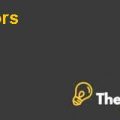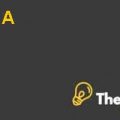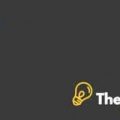
Rushway Brothers Lumber and Building Supplies (RLBS) Case Solution
Introduction/Background
RLBS is a building supply (Construction) and Lumber merchandising business, which was established by George Rushway in 1922. Initially, the business was only involved in merchandising, then it extended to construction projects as his two sons joined the business and started to serve many projects such as retail market for home, wholesale contracting and other building contracts. After the death of George Rushway, both the brothers operated the business with equal shareholding of 50%; the business achieved its reputation in quality products, good service, and finely skilled worker. After his death, the company hired mangers in merchandising, construction department and also general manger to delegate the day to day operations and company had stable profits since 1990. Then in 1991 due to the recession, the inventory started to increase as well as other expenses such as salaries and wages and profits were declining as well as the individual shareswere declining. Gordon Rushway (son of George Rushway) hired his daughter named Charlotte to analyzed and control the cost structure of business. In 1992, with her hard work earnings again started to increase by cost optimization strategy and her decision was to sale the business with a proper valuation of business.
Problems Faced by the business:
The Company had two segments including merchandising and construction, merchandising segment is very price sensitive because of a large amount of transaction with properly demanded service such as delivery on time. is the other segment is construction segment, which includes structure for commercial, recreational and agricultural purposes that generate major portion of revenue. However, the business was facing loss after 1990, due to the increase in inventories cost and bank loan as well as interest cost and an increase in operational expenses as compare to previous years. The company was not able to pay the bank loan and also did not want to renew its loan.
Measures were taken to mitigate the problems
Charlotte took following steps to effectively remove the problems, including:
- On job training by understating the merchandising process,
- Learning about the customers and its competitors,
- Price volatility of lumber and plywood,
- Discounts were offered to early delivery contractors,
- Development of staff with good customer relations
These efforts led to the success of business by offering high-quality products at high price that cut the inventory cost and raised the profit by $67.6, 000 in 1991. Along with this, Charlotte paid the bank loan with interest and principal amount. After stabilizing the business, Charlotte was up to on selling the business by calculating its market value.
Analysis
The decision of selling the business is based on some factors such as lack of capital, family issues or failure of not achieving the stated goals. It can be managed by refinancing, buyout management, hiring efficient staff, Merge or liquidate.
Alternatives
Charlotte has built a successful business and decided to sell the business, therefore following alternatives would helpful to her for exit strategy, which include:
- Equity sale
- Deal with third party buyer
- Sell to your employees
- Stay on as an advisor
Criteria
The first alternative is equity sale:The business should be professionally valued at market value for employees or other investors, who want to buy shares as the business is profitable and has strong growth opportunities, therefore investors will surely buy the shares. It is one of the best methods to liquidate the business..............
This is just a sample partial case solution. Please place the order on the website to order your own originally done case solution.










